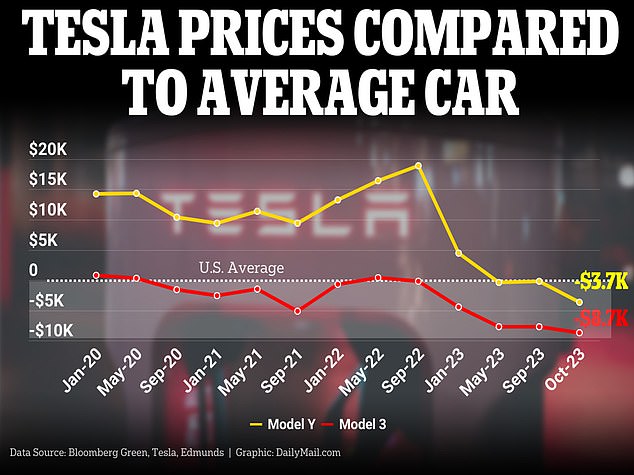Motorists fall behind on car loans at their highest rate in three DECADES – as drivers with bad credit face paying up to 21.38% interest on a used car
- Motorists are defaulting on their car payments at the highest rate in three decades
- About 6.11% of borrowers were 60 days past their loan due date in September
- Drivers with bad credit pay up to 21.38% interest rates on cars
Motorists are falling behind on their car loan payments at the highest rate in almost thirty years, new figures show.
The Federal Reserve’s aggressive campaign to raise interest rates has sent car payments soaring, leaving millions unable to pay their monthly bills.
Data from Fitch Ratings shows that 6.11 percent of auto borrowers were at least 60 days past their loan due dates in September. According to analysts, this is the highest percentage since 1994.
The increase is attributed to higher car prices and financing costs. And drivers are already struggling under the weight of other financial pressures, like higher mortgage payments and student loan repayments.
According to Bankrate, the average car loan rate for drivers with the best credit scores is 5.07 percent for a new vehicle and 7.09 percent for a used vehicle. But for those with worse credit, the average rates are 14.18 percent and 21.38 percent, respectively.
DailyMail.com analyzed how much a motorist now has to pay in monthly installments for the most popular American cars
By comparison, in the fourth quarter of 2021, buyers with the best credit scores would qualify for a rate of 2.47 percent, according to Experian. Those with a “good” score would pay a rate of 3.51 percent.
In real terms, this means that a motorist buying a Ford F150 with a ‘good’ credit score – between 660 and 719 – would pay back around €633 per month.
The analysis – by Carvana‘s car payment calculator – assumes a 10 percent down payment, a 9 percent interest rate and a loan term of 60 months.
But two years ago, a buyer with the same credit score who bought a car for the same price would pay $554.11 per month. It means a difference of $78.89 per month – or $946.68 per year.
Margaret Rowe, a senior director at Fitch, told us Bloomberg: ‘The subprime borrower is coming under pressure.’
Experts now speculate that car seizures will soon increase as motorists struggle to keep up. Cox Automotive estimates that 1.5 million vehicles will be seized this year, up from 1.2 million last year, according to Bloomberg.

Tesla’s most popular electric cars now compete with gasoline cars on sticker price, following the company’s latest round of cost cuts
It comes as the cost of a new car fell slightly in September after hitting record highs earlier this year.
According to Kelley Blue Book, the average transaction price for a new vehicle in September was $47,899. It marked a drop of $360 from the same month in 2022.
Rebecca Rydzewski, research manager at Cox Automotive, said at the time: “Dealers and automakers are feeling pricing pressure, and with auto loan rates at record highs and inventory levels rising, new vehicle prices continue to fall.”
The decline was largely attributed to a series of price cuts imposed by electric car maker Tesla.
The manufacturer, co-founded by billionaire Elon Musk, lowered the prices of its vehicles almost every month in 2023. Since September last year and this year, the cost of a new Tesla has fallen by 25 percent.
